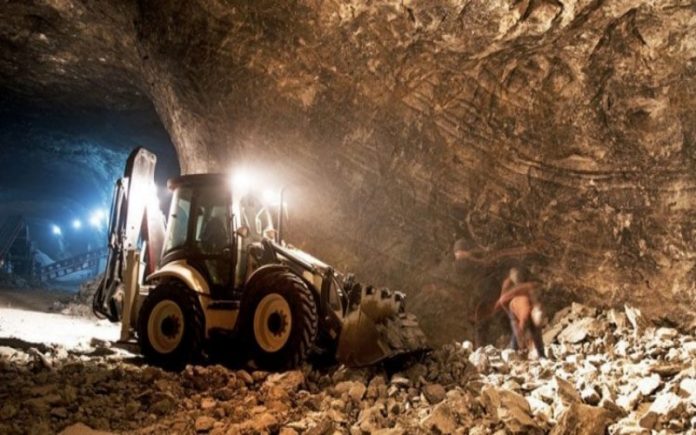
It’s done! A few weeks ago Asante Gold acquired a 90% stake of the Chirano gold mine in Ghana through a deal valued at US$225million with Canada’s Kinross Gold Corporation. This takeover happened thanks to public funds and should boost recovery of the national extractives sector, which contributes to more than 5% of the national GDP. The Ghanaian government, which already held a 10% stake in the mine, agreed to the sale according to an official statement released by Kinross Gold Corporation.
In October 2018, President Nana Akufo-Addo addressed the nation and shared his vision of a financially independent Ghana. His vision of ‘Ghana beyond aid’ should lead the state to exploit the country’s natural resources more efficiently, and thereby increase royalties from domestic production.
The acquisition of Chirano gold mine is symbolic of the country’s ambition to regain control over the exploitation of its minerals and oil resources. Ghana made this transaction possible by fully financing it through mobilisation of the Ghana Infrastructure Investment Fund (GIIF) and the Minerals Income Investment Fund (MIIF). Crucially, four Ghanaians belong to the management team of Asante Gold. This action by the Ghanaian executive is to be welcomed. Behind the acquisition of this asset by a junior lies an ambitious government initiative to create a new leader in the mining sector that will defend the interests of Ghanaians above all.
But if government wants to see the emergence of true national champions, a little more involvement is required. In the specific case of this transaction, the Ghanaian government has not yet publicly and formally presented its approval of this major takeover. This represents another opportunity for government to demonstrate its full support for local entrepreneurs. The West African country had already done so in 2021 when it positioned Springfield, a Ghanaian oil junior, among the country’s largest hydrocarbon companies. The latter won a lawsuit against the Italian giant ENI over a dispute concerning the Sankofa and Afina oil fields. The Ghanaian government, buoyed by this oil and gas success, is trying to replicate this in the gold mining sector.
Asante Gold, thanks to the financial commitment of the Ghanaian government, now has increasingly important assets in the country’s mining sites. This is particularly the case at the Kubi Gold and Bibiani Mines, where it is developing its mining operations. With this financial support from government, the Ghanaian junior owns a sizeable public fund – almost US$500million – to invest in the Chirano gold mine.
In Southern Africa, Zambia’s example of buying up the country’s main mining sites is a textbook case. The Zambian state first nationalised the entire mining industry in 1969. This move was later affirmed by a United Nations General Assembly resolution on The New International Economic Order, 1974, which resolution read in part: ‘In order to safeguard these (natural) resources, each state is entitled to safeguard effective control over them and their exploitation with means suitable to its own situation…’ . The mines remained under state ownership and control between 1969 and 2000. During this period, copper production plummetted from pre-nationalisation figures of approximately 750,000 tonnes per annum to 250,000 tonnes in the year immediately prior to post-privatisation.
After the mines were privatised, there was a commodities boom and these production figures only reached the pre-nationalisation levels in 2019. It took two painful decades to get the country’s production back to the levels it had reached in 1969! The lesson here is clear – a country’s ambitions to regain control over its mineral and oil resources is legitimate. However, this ambition should not necessarily translate into nationalisation. The UN resolution states that this can be done ‘…with means suitable to its own situation’. In this case, the suitable means are the support of a competent private national champion.
Notwithstanding the lessons learnt from the past, the Zambian state has in recent times been hardening its relationship with the mining industry in order to regain control of its mines to boost its economy. “Owning interests in certain strategic mines gives the state the leverage to use mineral resources for the benefit of the nation”, Zambian President Edgar Lungu said in December 2020.
Critics of the buy-back policy say it is abrupt, but with a clear vision it could be a lifesaver for the Zambian economy. In 2021, the Zambian state acquired all shares in the Mopani copper mine for US$1.5billion through its company ZCCM-IH. It was 90% owned by the Swiss company Glencore. It also expropriated the Vedanta-owned Konkola Copper Mines. Since the acquisition of these two mines by the Zambian government, production figures have dwindled at a time when the nation should be taking advantage of a rise in commodity prices.
One may contrast these scenarios with fortunes of the country’s largest power supplier to the mines, the Copperbelt Energy Corporation Plc (CEC). The entity was formed as a management buy-out of the state-run ZCCM Power Division in 2000. The Board of Directors, senior Executive and Management teams in the entity (as is the case with Asante) are indigenous Zambians. This local champion has expanded its operations, making it the leading supplier of reliable power to the mines in Zambia and the Democratic Republic of Congo.
Analogies can be drawn between CEC and Asante to provide lessons for Ghana. In the words of Tom Klause, President of the World Bank in 1981: ‘African governments should not only examine ways in which the public sector organisations can be operated more efficiently, but should also examine the possibility of placing greater reliance on the private sector’. These words ring just as true today. As African governments seek to increase control of their mineral and oil resources, it must be realised that this can be done far more efficiently through the support and backing of national private champions such as Asante Gold.
History teaches us that South Korean industrial and technological champions are at the heart of the industrial power of this Asian country, and at the origin of its fabulous economic and social development in less than half a century. But they have needed the support of their political authorities to take on the world. The governments of Ghana and all African countries should also intensify the promotion of our entrepreneurs, which are the ones who can achieve the African dream.
The writer is the former President of the Zambian Chamber of Mines
























